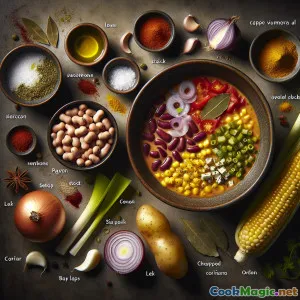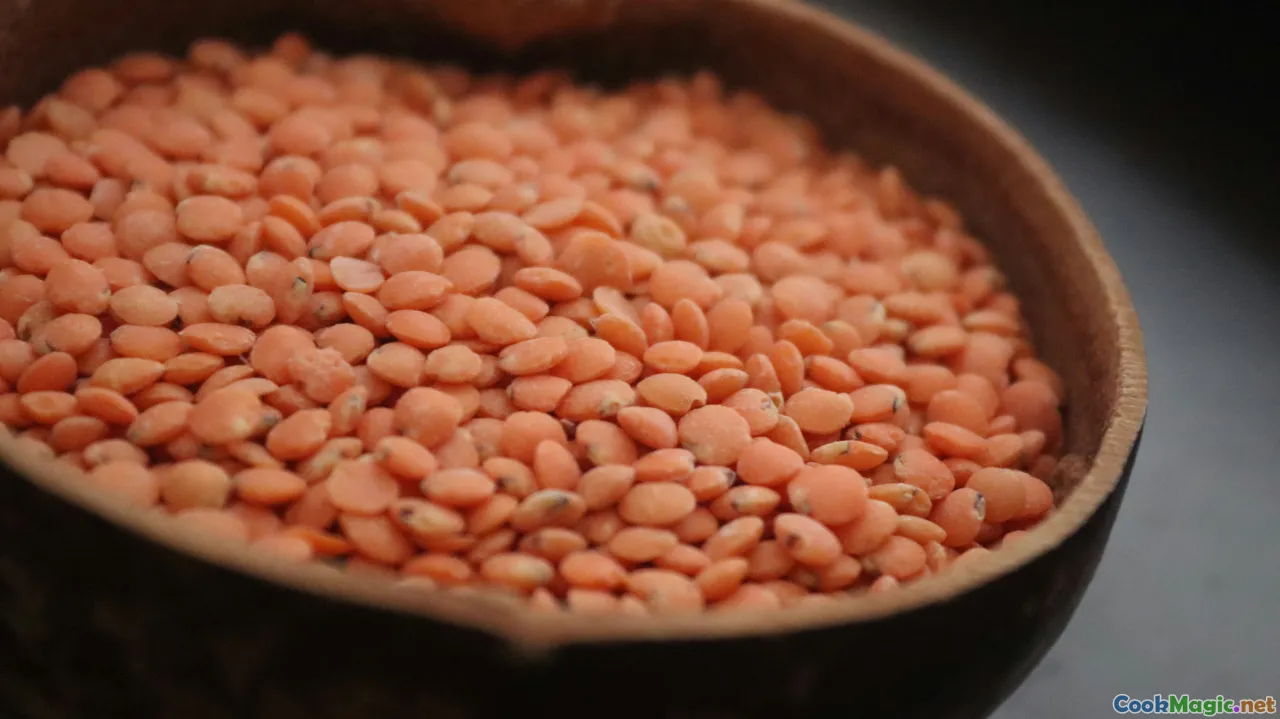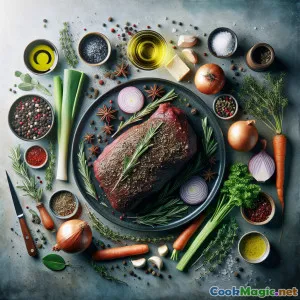
Chili Đậu và Ngô Nấu Nước Sốt Cay
(Spicy Bean and Corn Stew with Ají Kick)
(0 Đánh giá)0
1,175
tháng 7 15, 2025
Báo cáo sự cố
Nguyên liệu
-
200 grams Đậu trắng khô
(Ngâm qua đêm nếu có thể hoặc ngâm nhanh)
-
250 grams Hạt ngô ngọt
(Tươi hoặc đông lạnh, đã ráo nước nếu đóng hộp)
-
2 tbsp Bột ớt vàng Ají amarillo
(Thay thế bằng ớt vàng nhẹ để giảm độ cay)
-
1 medium Hành tím
(Băm nhỏ)
-
3 large Tỏi
(Xay nhuyễn hoặc bào nhỏ)
-
1 medium Hẹ
(Được cắt lát và rửa sạch)
cần tây, 2
-
1 litre Nước dùng rau củ
(Ưu tiên ít muối)
Lá nguyệt quế, 2
-
1 tsp Bột thìa là
-
1 tsp Oregano
(Nguyên liệu khô, hoặc 1 thìa canh oregano tươi đã xắt nhỏ)
-
1 tsp Ớt bột paprika hun khói
-
1 large Khoai tây
(Bóc vỏ và cắt hạt lựu)
-
2 tbsp Dầu ô liu nguyên chất
-
1/2 tsp Muối biển
(Điều chỉnh theo khẩu vị)
-
1/4 tsp Hạt tiêu đen
(Xay mới)
-
2 tbsp Ngò rí tươi thái nhỏ
(Để trang trí, tùy chọn)
-
30 grams Phô mai xanh Anh quốc vụn
(Thêm vị béo béo nếu muốn)
(Ngâm qua đêm nếu có thể hoặc ngâm nhanh)
(Tươi hoặc đông lạnh, đã ráo nước nếu đóng hộp)
(Thay thế bằng ớt vàng nhẹ để giảm độ cay)
(Băm nhỏ)
(Xay nhuyễn hoặc bào nhỏ)
(Được cắt lát và rửa sạch)
(Ưu tiên ít muối)
(Nguyên liệu khô, hoặc 1 thìa canh oregano tươi đã xắt nhỏ)
(Bóc vỏ và cắt hạt lựu)
(Điều chỉnh theo khẩu vị)
(Xay mới)
(Để trang trí, tùy chọn)
(Thêm vị béo béo nếu muốn)
Dinh dưỡng
- Khẩu phần: 4
- Kích thước khẩu phần: 1 bát (300g)
- Calories: 380 kcal
- Carbohydrates: 0 g
- Protein: 18 g
- Fat: 8 g
- Fiber: 15 g
- Sugar: 6 g
- Sodium: 570 mg
- Cholesterol: 6 mg
- Calcium: 140 mg
- Iron: 3.5 mg
Hướng dẫn
-
1 - Ngâm và nấu đậu:
Nếu dùng đậu hạt khô, ngâm qua đêm hoặc nhanh ngâm bằng cách đun sôi trong nước trong 10 phút rồi để nguội trong 1 giờ. Vớt ra, rửa sạch, đổ nước mới rồi ninh trong 45 phút cho đến khi mềm nhưng không nát.
-
2 - Chuẩn bị nền thơm:
Trong một nồi lớn, làm nóng dầu ô liu ở nhiệt độ trung bình. Thêm hành đỏ băm nhỏ, tỏi tây (nếu dùng), cần tây và tỏi. Xào cho đến khi mềm và thơm, khoảng 8–10 phút.
-
3 - Thêm Gia Vị & Ớt Chanh:
Khuấy đều trong bột ớt ají amarillo, thì là xay, oregano và paprika hun khói. Nấu, thường xuyên khuấy, trong 2–3 phút để làm đậm đà hương vị.
-
4 - Kết hợp và đun nhỏ lửa:
Thêm đậu đã nấu chín vào nồi. Đổ ngô, khoai tây cắt nhỏ (nếu dùng), lá nguyệt quế, nước dùng rau, muối biển và tiêu đen. Khuấy nhẹ để trộn đều tất cả.
-
5 - Hầm và xay nhuyễn Mazamorra:
Đưa món hầm vào trạng thái sôi nhẹ. Nếu bạn thích độ đặc đặc, hãy lấy ra khoảng một muỗng canh đậu và ngô, xay nhuyễn rồi khuấy trở lại vào nồi.
-
6 - Điều chỉnh và hoàn thiện:
Nếm thử và điều chỉnh muối hoặc độ cay của ớt nếu muốn. Loại bỏ lá bay. Dọn nóng trong bát, trang trí với rau mùi tươi cắt nhỏ và rắc phô mai xanh vụn nếu bạn muốn.
Nếu dùng đậu hạt khô, ngâm qua đêm hoặc nhanh ngâm bằng cách đun sôi trong nước trong 10 phút rồi để nguội trong 1 giờ. Vớt ra, rửa sạch, đổ nước mới rồi ninh trong 45 phút cho đến khi mềm nhưng không nát.
Trong một nồi lớn, làm nóng dầu ô liu ở nhiệt độ trung bình. Thêm hành đỏ băm nhỏ, tỏi tây (nếu dùng), cần tây và tỏi. Xào cho đến khi mềm và thơm, khoảng 8–10 phút.
Khuấy đều trong bột ớt ají amarillo, thì là xay, oregano và paprika hun khói. Nấu, thường xuyên khuấy, trong 2–3 phút để làm đậm đà hương vị.
Thêm đậu đã nấu chín vào nồi. Đổ ngô, khoai tây cắt nhỏ (nếu dùng), lá nguyệt quế, nước dùng rau, muối biển và tiêu đen. Khuấy nhẹ để trộn đều tất cả.
Đưa món hầm vào trạng thái sôi nhẹ. Nếu bạn thích độ đặc đặc, hãy lấy ra khoảng một muỗng canh đậu và ngô, xay nhuyễn rồi khuấy trở lại vào nồi.
Nếm thử và điều chỉnh muối hoặc độ cay của ớt nếu muốn. Loại bỏ lá bay. Dọn nóng trong bát, trang trí với rau mùi tươi cắt nhỏ và rắc phô mai xanh vụn nếu bạn muốn.
Thông tin thêm về: Chili Đậu và Ngô Nấu Nước Sốt Cay
Porotos con Mazamorra al Ají: Story, Notes & Kitchen Insights
Porotos con Mazamorra is a deeply comforting dish rooted in South American traditions, particularly in countries like Peru, Argentina, and Chile, where robust stews and legume dishes anchor hearth and home. This English interpretation, 'Porotos con Mazamorra al Ají', fuses the classic essence of creamy beans and sweetcorn (corn maíz), blended partially to create the beloved 'mazamorra' texture, with vibrancy lent by ají amarillo—the iconic South American chili. For this original recipe, the heartiness of haricot beans (a staple Pulse in English cuisine) melds seamlessly with sweetcorn, creating a transatlantic bridge of taste and nourishment.
Historical Footing and Cultural Significance
In its original form, Porotos con Mazamorra is both everyday fare and festival highlight across parts of Latin America. The emphasis on beans and corn testimony to pre-Columbian agricultural wisdom, sustenance, and the ingenious ability to create extra nutrition and flavor from the humblest of local ingredients. Adding ají gives signature warmth, zest, and a sunny yellow color that invigorate both palate and table. Influences from Latin America's colonial past and indigenous traditions have been adopted for centuries, but for this recipe, typically English kitchen garden additions—like leeks, celery, and crumbly blue cheese—intertwine with the ancient.
Key Elements and Unique Twists
- Beans and Corn: Traditionally, large creamy white beans or canary beans are used. Haricot beans in the English setting produce a lusciously soft but structured bite, easily available and reliable for texture.
- Mazamorra Technique: Partly blending a portion of the beans and corn alongside some stock thickens the stew into its characteristic creamy 'mazamorra'—much like a bisque, but without heavy cream. This step is a sensible tweak readily achievable with an immersion blender.
- Ají Amarillo: South America's sunshine chili, ají amarillo's fruity heat is approachable but compelling—use less if sensitive to spice. In England, imported ají paste is increasingly available, but any mild fresh yellow chili will lend warmth without overwhelming.
- English Blue Cheese: Optional, but dotting a spoonful of rich blue cheese brings brightness and depth—echoing the way Latin Americans sometimes finish their stews with a fresh cheese or sharp yogurty note.
- Garnishing with Coriander: This finish brings crisp herbal notes. For heat seekers, scatter extra chili or offer a slice of lemon for acidity.
Serving and Occasions
This is a protein-rich vegetarian main, ideal as a winter warmer, a meatless staple, or as a colourful centrepiece for weekend gatherings with friends curious about fusion cooking. It pairs beautifully with a simple salad, toasted cornbread, or rustic rolls to scoop every last drop.
Tips & Personal Thoughts
- Give yourself plenty of time for a superior texture—soaking and simmering beans gently is the key to warmth without splitting.
- For a chunkier, more rustic presentation, skip the blending step; for a smoother stew, blend more.
- Repurpose leftovers as a pie filling or in baked empanadas—with grated cheese on top.
The fusion here is greater than novelty—it's about food rooted in memory and meaning. While the dish links two continents, it honors simplicity while speaking to open-palmed hospitality, delicious taste, and the joy of spice that all cultures share. Making this recipe in an English kitchen is not only a treat for comfort food lovers but also a delicious opportunity to celebrate the world's harvest and flavor in a single, beautifully brimming bowl.
Enjoy experimenting with this hearty, sunny tribute to tradition and innovation, from the valleys of South America to the rolling hills of England—and everywhere home cooks dream up something special.

























